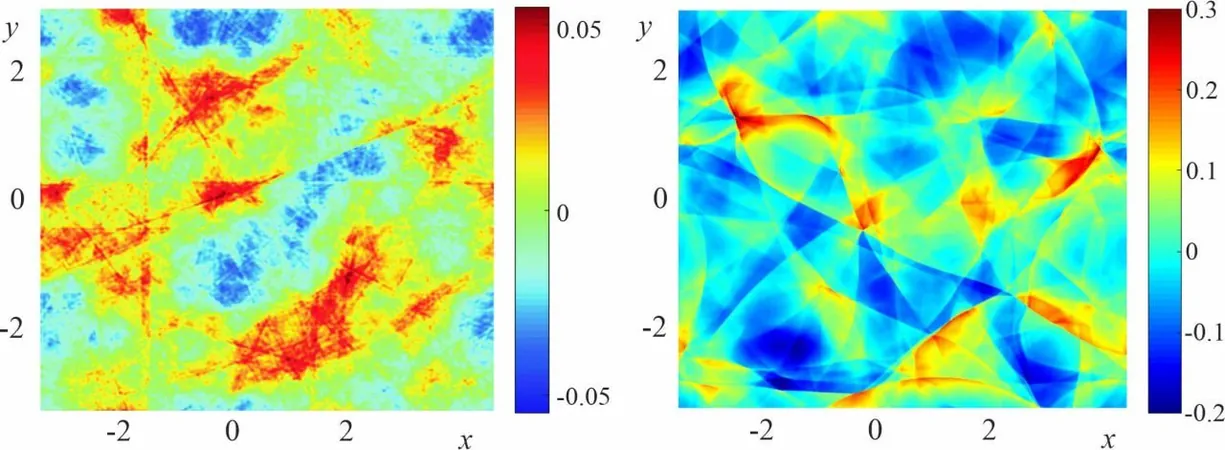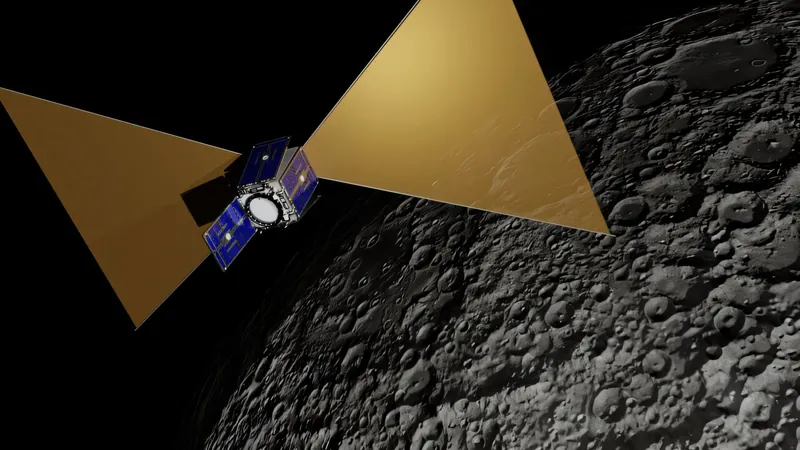
Groundbreaking Advancement in Acoustic Turbulence: First Simulation of Chaotic Sound Wave Propagation Revealed!
2025-01-16
Author: John Tan
Groundbreaking Advancement in Acoustic Turbulence
In a remarkable leap for scientific research, a team of Russian scientists has successfully used advanced parallel computing techniques on standard graphics cards to simulate acoustic turbulence for the very first time. Previously, such intricate simulations necessitated the heavy lifting of a supercomputer, but now, this vital work can be accomplished on everyday personal computers. This groundbreaking development has profound implications for improving weather forecasting models and applying turbulence theory across various fields of physics, including astrophysics—where it may help predict the pathways and propagation speeds of sound waves traversing the cosmos. The findings are documented in a recent issue of *Physical Review Letters*.
The Nature of Turbulence
Turbulence—characterized by its chaotic and complex behavior—affects fluids, gases, and even nonlinear waves across numerous physical systems. While we are often aware of turbulence at sea, stirred by wind or currents, it also manifests in optical systems due to the scattering of laser light. Sound waves, too, confront turbulence as they travel unpredictably in certain environments, such as superfluid helium.
Historical Context
Historically, the seeds of this research were planted in the 1970s by Soviet scientists who first theorized that turbulence emerges when sound waves deviate from their equilibrium state and reach significant amplitudes. This wave turbulence theory has broader implications, potentially extending to magnetohydrodynamic waves seen in the ionospheres of stars, giant planets, and even the elusive gravitational waves thought to have rippled through the early universe. Despite its significance, the ability to accurately predict the propagation patterns of nonlinear acoustic waves—a previously treacherous computational task—remained elusive until now.
Collaborative Effort and Milestone Achievement
The collaborative effort by researchers from Skoltech, the Institute of Electrophysics of the Ural Branch of RAS in Yekaterinburg, and the Lebedev Physical Institute of RAS in Moscow represents a significant milestone. They have devised a numerical solution to the equations governing sound wave propagation in turbulent environments, validating the theories of their Soviet predecessors.
Innovative Simulations Using Graphics Cards
Utilizing an inventive approach, the researchers ran intricate simulations using four graphics cards on a single PC, achieving precise numerical outcomes that significantly reduced the dependency on massive supercomputers. To validate their innovative findings, they examined the behavior of sound waves in a nonlinear medium akin to superfluid helium at an astonishing -270°C. Under such extreme conditions, helium enters a superconducting phase, making it invaluable for technologies such as quantum computers, maglev trains, and various advanced machinery employed in the nuclear power sector.
Broader Implications of the Breakthrough
The implications of this breakthrough extend far beyond acoustic wave propagation. The establishment of turbulence theory for sound waves can be likened to the foundational work of the periodic table, where different types of turbulence—be it acoustic, gravitational, or magnetohydrodynamic—represent distinct 'elements' with properties that can be systematically predicted.
Application in Weather Forecasting and Ocean Dynamics
Furthermore, this turbulence theory can be applied to other scenarios, such as mapping and simulating ocean wave dynamics. The integration of these numerical solutions into weather forecasting and climate modeling has already begun yielding more accurate forecasts, a testament to the power of the turbulence theory in action.
Future Prospects and Research Commitment
As Evgeny Kochurin, a lead researcher on the project, notes, 'Understanding the nature of turbulence is one of the paramount challenges facing modern physics. The advancements in turbulence theory have already sharpened weather forecasting techniques. Our team is committed to exploring further applications in wave systems, including large-amplitude ocean waves.'
Conclusion: Toward New Realms of Science and Technology
Interestingly, Kochurin points out the striking similarities between sound waves and ocean waves; both experience phenomena like shock waves and breaking waves, leading to high-energy density environments. These insights could unlock further understanding of turbulence across various disciplines, proving that the links between sound dynamics and oceanography might be deeper than we could ever imagine. Stay tuned as this study not only reshapes our understanding of sound but also has the potential to unlock new realms of science and technology!



 Brasil (PT)
Brasil (PT)
 Canada (EN)
Canada (EN)
 Chile (ES)
Chile (ES)
 Česko (CS)
Česko (CS)
 대한민국 (KO)
대한민국 (KO)
 España (ES)
España (ES)
 France (FR)
France (FR)
 Hong Kong (EN)
Hong Kong (EN)
 Italia (IT)
Italia (IT)
 日本 (JA)
日本 (JA)
 Magyarország (HU)
Magyarország (HU)
 Norge (NO)
Norge (NO)
 Polska (PL)
Polska (PL)
 Schweiz (DE)
Schweiz (DE)
 Singapore (EN)
Singapore (EN)
 Sverige (SV)
Sverige (SV)
 Suomi (FI)
Suomi (FI)
 Türkiye (TR)
Türkiye (TR)
 الإمارات العربية المتحدة (AR)
الإمارات العربية المتحدة (AR)